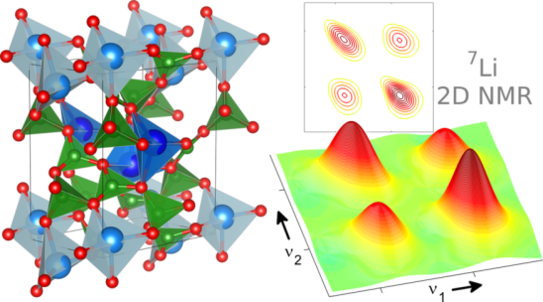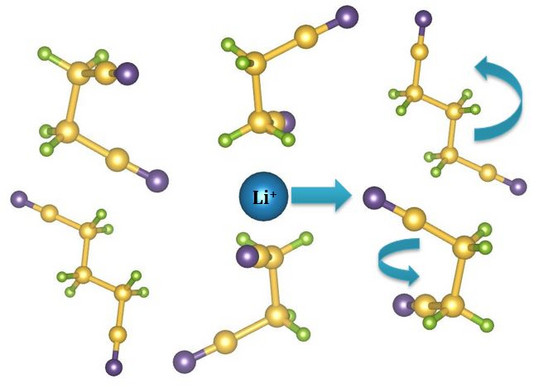Ionic conductors
Charge transport in solids is an exciting field of research, not least because of the wide range of technical applications, for example of lithium ion conductors in electrodes and electrolyte materials in accumulators. In order to advance the development of higher-performance materials with higher electrical conductivity and greater storage density, especially for mobile devices, a better understanding of ionic hopping processes at the atomic level is essential.

To achieve this goal, we employ a number of different NMR (nuclear magnetic resonance) methods, some of which have been developed and further refined in the group. In addition to measurements of spin relaxation times and the analysis of multidimensional NMR spectra, we apply modern spin-echo methods. This allows us to detect ionic hopping motions in crystalline and non-crystalline materials over large ranges of temperature and charge mobility. In addition to magnetic resonance on lithium, we use deuterons, silver, sodium, rubidium, oxygen, and other probe cores. By combining experiments with computer simulations, we decipher so many details of the complex charge transport in solids and soft materials such as polymer electrolytes. In addition, we apply frequency-dependent conductivity spectroscopy and rheology to discover how atomic processes and technically relevant properties are linked in these ionic conductors.
Plastic crystals
Plastic crystals are among the most unusual substances in the field of soft matter, as they possess both solid and liquid properties. This is because, although the molecules sit on fixed lattice positions, they rotate freely in a similar way to a liquid. This leads to great mechanical deformability and fascinating molecular dynamics. Interest in plastic crystals has grown even more recently, particularly because of their applicability as lithium electrolytes. Indeed, after addition of lithium ions, plastic crystals not only retain their mechanical flexibility, but also exhibit surprisingly high ionic conductivity.

This opens the door to a wide range of applications, from wearable electronics to implanted medical devices. However, optimizing these materials requires a deep understanding of the physical and chemical processes occurring inside them, which must be broken down using appropriate investigative techniques. In our group, we employ solid-state NMR, which provides element-specific insights into molecular and ionic dynamics. Combined with dielectric spectroscopy, we succeed in exploring the ionic conductivity and matrix dynamics of plastic electrolytes in detail. Their mechanical properties, which are equally important for the application, are determined by rheology. Together with numerical analyses, this multi-experimental approach allows fundamentally new insights into the dynamics of potential energy storage materials.
Articles on the topic of "Plastic crystals" and "orientational glasses".


